Welcome to Old School Month on Eternal Central. We’re looking at a different Old School 93-94 deck each day of the month. Today’s deck is Pink Weenie, named for playing small/weenie creatures in a Red and White (Pink) shell.
Constructing Pink Weenie
This deck is basically White Weenie with a red splash, for more removal, reach, and Wheel of Fortune, while also providing more sideboard options. Here is the latest version from the rugged streets of Chiraq.
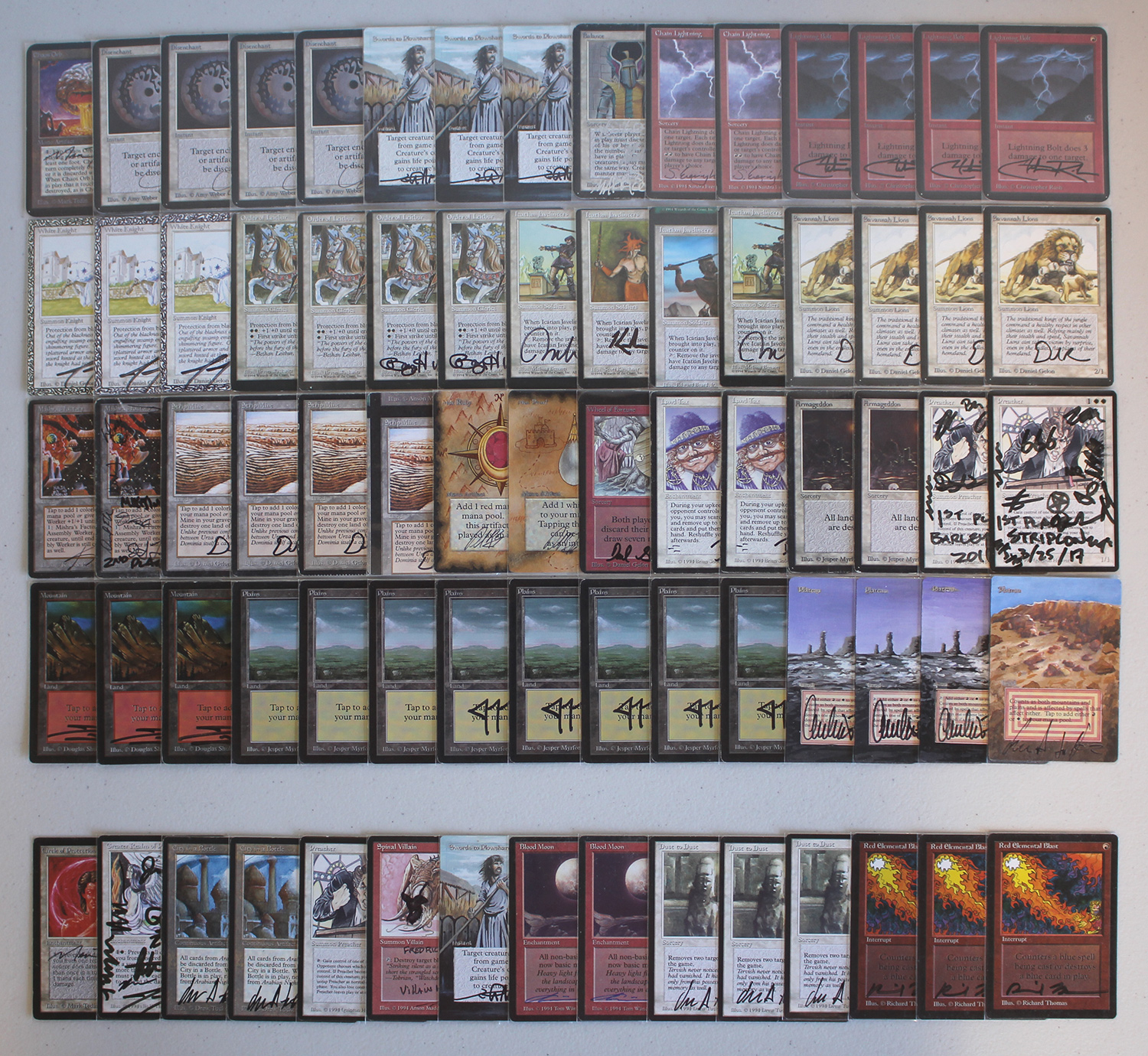
Creature Choices
Charting the same course that normal White Weenie decks would, it follows that we would want as many cheap (but efficient) creatures of one to two mana as feasible, given the card pool. Here are some for consideration.
Savannah Lions is one of the most efficient creatures in 93-94, and probably the second best one drop, bested only by the mighty Kird Ape.
Icatian Javelineers is an addition from Fallen Empires (which may not be legal in some jurisdictions due to “tradition,” or due to the badassness of Javelineers being an existential threat to the free world), which is not only on curve, but helps control and combat other threats, such as Argothian Pixies, Preacher, and Royal Assassin. It can also change combat math, as holding it back to throw the javelin can certainly make opposing Mishra’s Factory blocking shenanigans less appealing.
White Knight is just standard operating procedure, with protection from black and first strike, but it is the weakest creature that we’ll be playing, as it is not as efficient as Savannah Lions, nor does it offer any other abilities, like the rest of the creatures presented here.
Order of Leitbur is another important addition from Fallen Empires, and much better than White Knight in my opinion. The ability to pump the Order means it can be a sizable threat on its own, such that the opponent must deal with it on an otherwise empty board, and you don’t necessarily have to walk in to a Balance or Wrath of God. The ability to pump it also means that it can easily trump an opposing Mishra’s Factory, which would otherwise easily hold White Knight at bay, for example.
Preacher is three mana, but the additional creature control capability is what earns it a spot in this deck. It oftens turns a stalemated battlefield in to a one-sided blowout. Plus the artwork by Quinton Hoover is the nut high, and truly captures the essence of Old School.
Draw Engines
Red and white and the worst colors in Old School at drawing cards, so our card advantage mechanisms for this deck are at a minimum. Wheel of Fortune is great in this build, because you will frequently want to dump your hand on to the board, or expend your resources blowing up opposing permanents, and then cast Wheel to refuel.
Land Tax not only can provide robust card advantage, but it works very well in a two color budget style deck, where you want to reliably be able to find your colored mana when needed, and especially for the handful of creatures that require double white in the casting cost. Playing Land Tax also combos nicely with Armageddon, which can often be a devastating play to the unsuspecting opponent, or can effectively end the game if you have a sizable army on the battlefield and the opponent has not yet found an answer.
Constructing a Mana Base
Basic lands and Plateau are a given for this deck, and the more basics you play, the more value Land Tax can provide. City of Brass may or may not be worth it in here, and the test version above does not play it. While it can provide both colors of mana, it runs afoul of the important City in a Bottle technology in the sideboard. I think 2-3 copies of City of Brass may ultimately be the right number though, especially the more spells you play that require double white in the casting cost.
Strip Mine is essential to this deck for the tempo it can create with your cheap threats. Just using a Strip Mine on the first or second turn before you have a threat on the board is often the wrong play, and one I see people make repeatedly. You aren’t really generating any tempo with a wasted Strip Mine, and the only reason I can see this as a useful tactic is if you are potentially shutting off the opponent from getting to a specific mana production you are concerned about (for example, hitting 4 mana to cast Jayemdae Tome, The Abyss, or some other problematic permanent).
While Library of Alexandria is the strongest card in the format, it will rarely get to be active in this deck, as you will constantly be casting threats and removal in an effort to seize the tempo.
Mishra’s Factory is an effective card, but you must carefully weigh how many you will play, given the mana requirements of your build, and given how many other colorless sources you wish to play. I value Strip Mine much more highly in this build, so I have included fewer Factories to compensate.
Designing the Sideboard
Red Elemental Blast and Dust to Dust are critical against The Deck and UWx control variants, while also each having utility against a large swath of other decks. They are probably the best cards in the sideboard for this reason.
The main deck already has a ton of removal and creature control, so you don’t need all that much help against aggro decks. Additional copies of Swords to Plowshares, Chain Lightning, Preacher, King Suleiman, Spinal Villain, and Pyrotechnics are all worthy countertactics. I like running 2-3 copies of City in a Bottle, because it is devastating against RUG decks (whose threats are typically larger than yours), and can also shut off plenty of other commonly played (and fringe) tactics.
Blood Moon is a card I like in the sideboard only here, to bring in against things that will truly have a tough time removing it. Against versions of The Deck that play a ton of Fellwar Stones it is not that effective, because they will likely be able to generate white mana from Fellwar, and can then Disenchant your Blood Moon, meaning you spent 3 mana to cast a speed bump.
Against decks with tons of burn Greater Realm of Preservation, and Circle of Protection: Red are worthwhile. Circle of Protection: Black should also be considered should you have the room, for its effectiveness in combating Underworld Dreams decks and black-based creature strategies.
Playing Pink Weenie
Like White Weenie and RUG Tempo, this is kind of an aggro-control strategy, where you cast cheap threats, and try to seize the tempo by using ensuing turns to cast removal spells, all while sending your creatures in to the red zone to reduce your opponent’s life total to zero as fast as possible. The additions of Lightning Bolt and Chain Lightning help change the calculus in this regard, and I think are better than something like Crusade in most cases.
Ten Opening Hands with Pink Weenie
Here are ten randomly drawn opening hands with the deck (in order, and not manipulated in any way), and a few brief words with how I might look to play said opening hands.
Opening Hand 1

With a one drop plus Strip Mine and removal spells, this hand is an easy keep. We don’t yet have the requisite mana to cast Order of Leitbur, but turns two and three will likely consist of casting a removal spell and using Strip Mine, in some order, so we have a few turns to draw another white source.
Opening Hand 2

This hand lacks a second white source for White Knight and Preacher, but has a Javelineers to drop on turn one, as well as Factory and Disenchant or Swords to Plowshares on turn two. This is probably a mediocre keep, but I could definitely see throwing it back for a fresh hand of six.
Opening Hand 3

Similar to the last hand, this hand lacks a second white mana to cast the multiple two drops present, but different in the regard that it doesn’t do anything relevant on turn one. While this hand contains both of colors, Factory, and a couple of removal spells, I’m actually going to mulligan this one for a slightly more aggressive hand.

An opening of Javelineers in to Strip Mine in to Strip Mine is not that impressive, but this is probably a keeper. With the pre-game scry I’d be seeking a red mana source, another creature of any kind, Land Tax, Chaos Orb, or a Disenchant, and would probably scry away anything else to the bottom.
Opening Hand 4
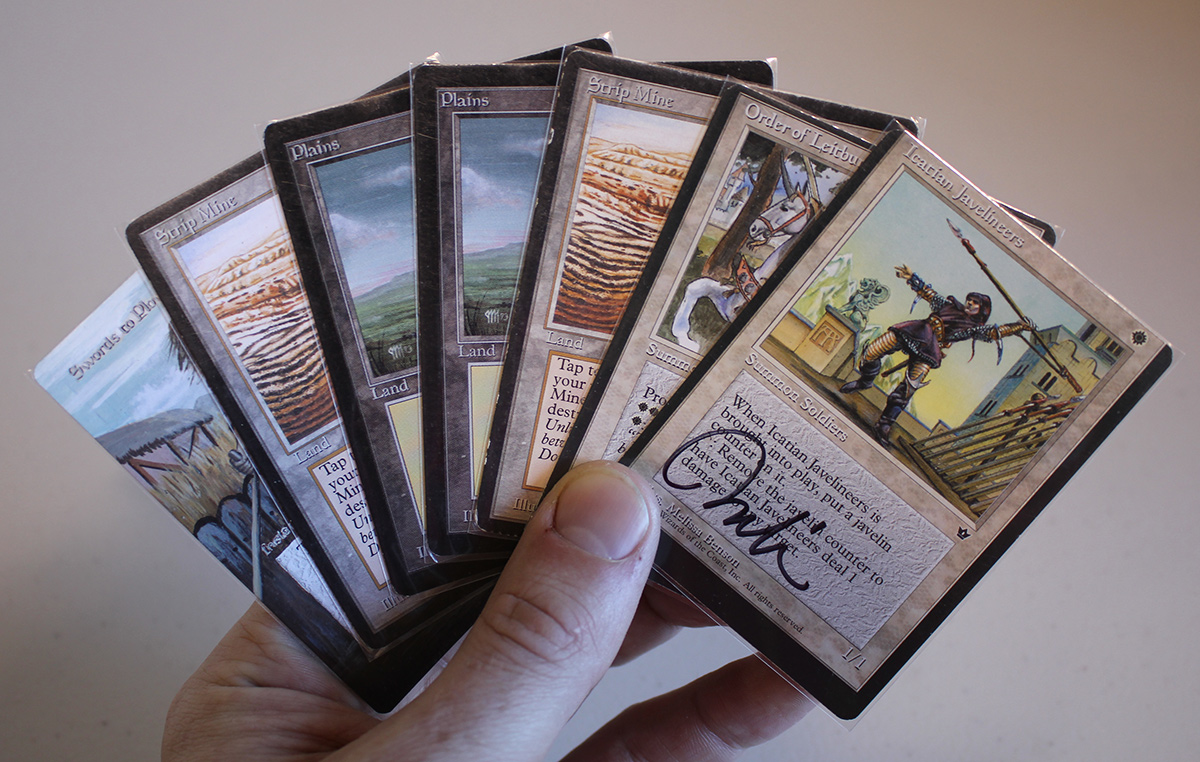
With plenty of mana, threats on curve, a Swords to Plowshares, and multiple Strip Mines, this is an easy keep. While we don’t yet have red mana, we also don’t have a pressing need for it with no red cards in hand.
Opening Hand 5
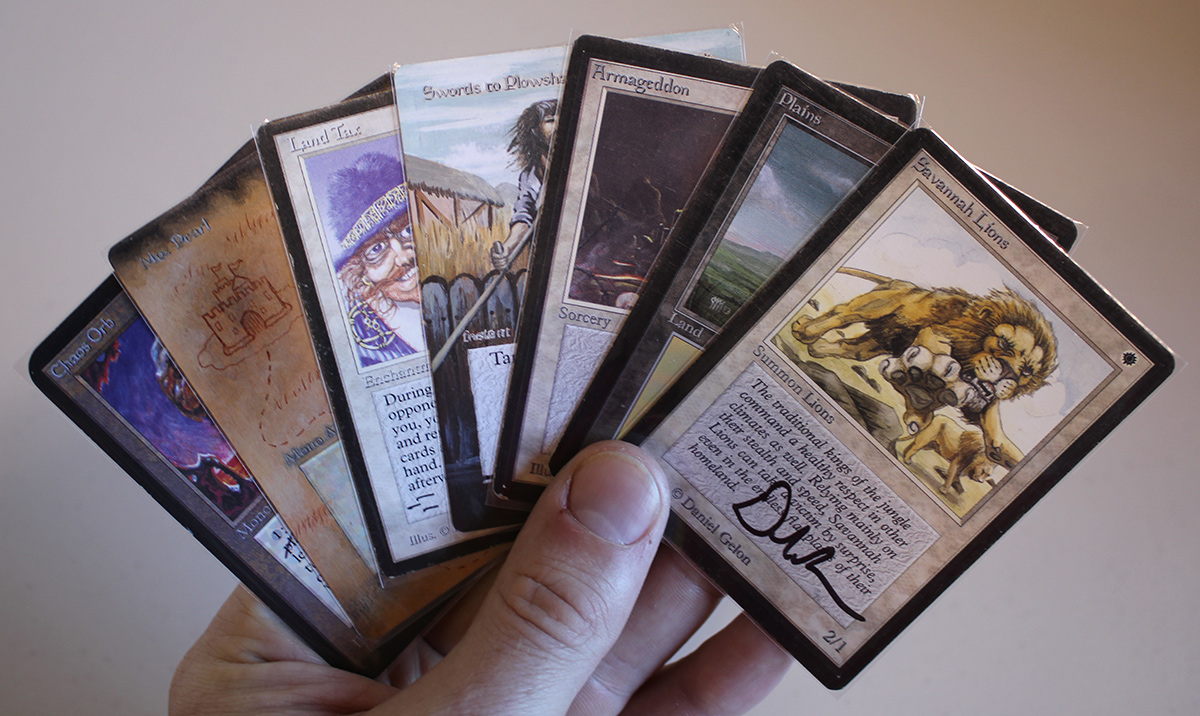
Another hand straight out of the White Weenie playbook, this affords you the option of casting both Savannah Lions and Land Tax on the first turn, which is quite strong. The presence of a fast threat on board means your opponent is more likely to have to play in to the Land Tax immediately to develop their own game plan, and the removal in hand should provide a nice answer to any other aggressive decks that would only need to subsist on one or two mana.
Opening Hand 6
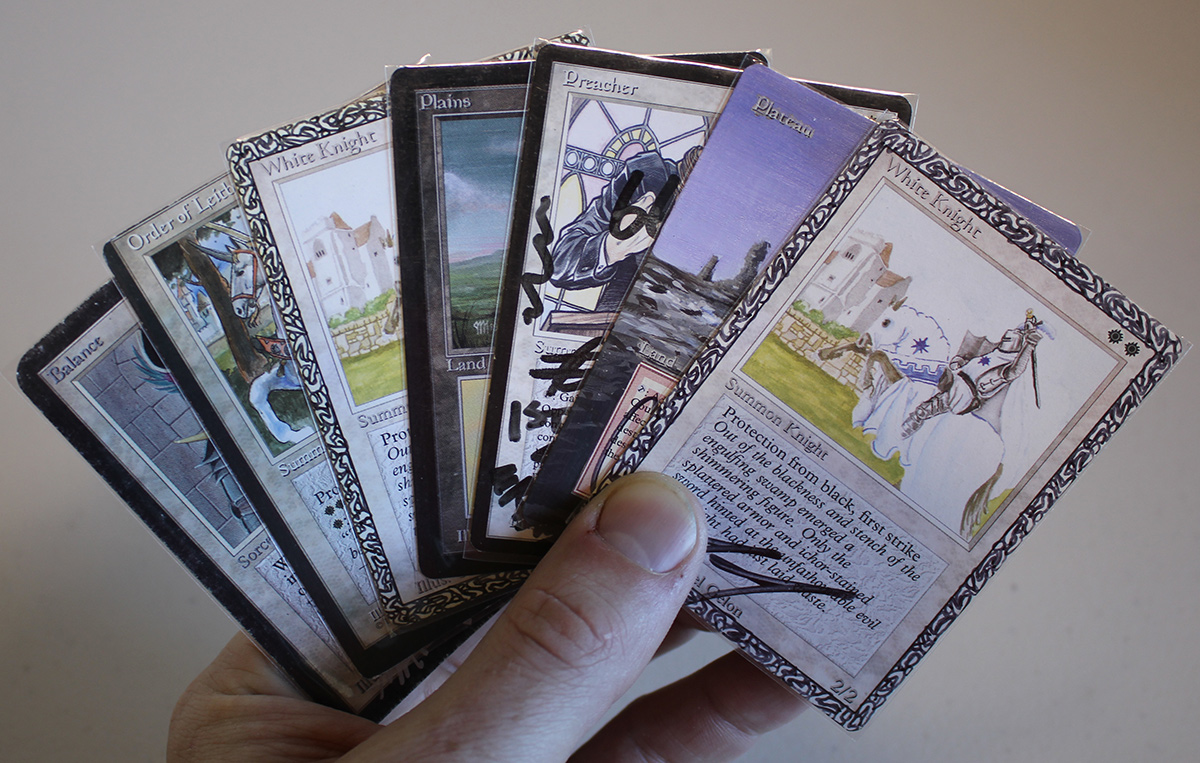
With no first turn play, but a couple of on-color mana sources and plenty of plays from turn two onwards, this is an average hand at best that you’ll end up keeping.
Opening Hand 7
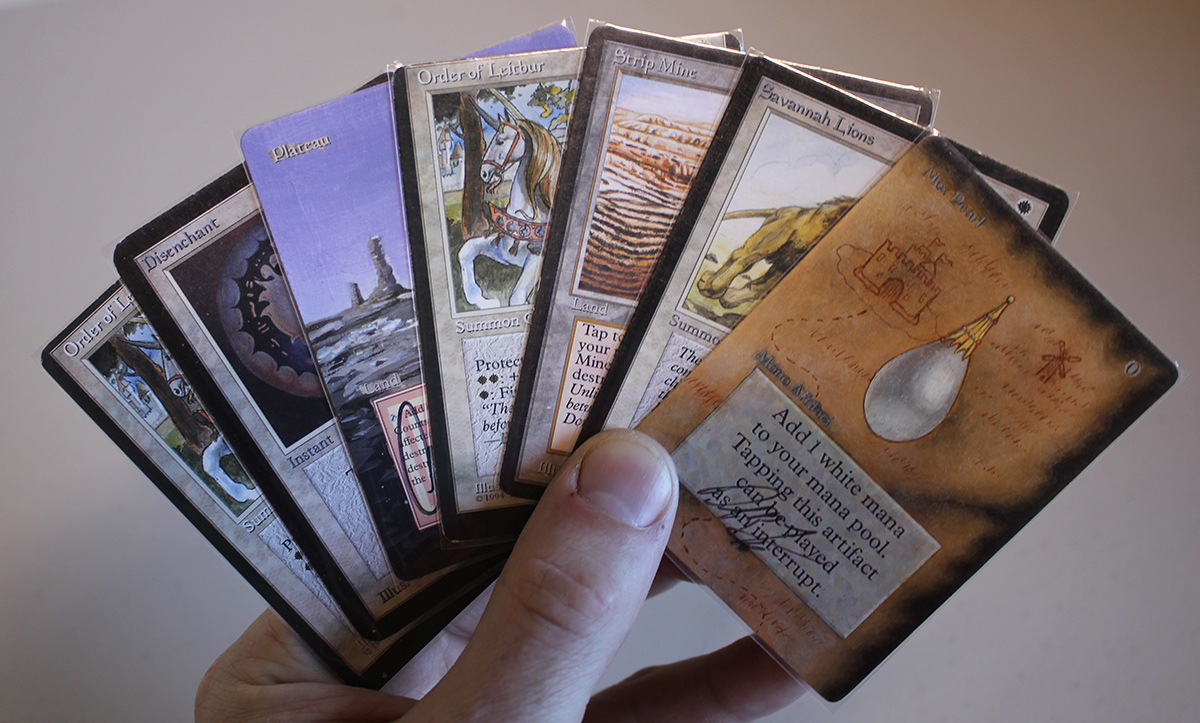
This hand lacks a ton of colored mana, but has enough to get by, and is probably going to win this game. If you’re on the play, you can lead with Plateau and Mox Pearl in to Order of Leitbur, and then on the second turn use a Strip Mine and cast another Order of Leitbur (or cast Savannah Lions should they Strip your Plateau for some reason, while already being behind on board). Or if you’re on the draw, you have that same option, or can go for Mox Pearl in to Savannah Lions, and use Strip Mine on their first turn land drop, while dropping the Plateau on the second turn in to Order of Leitbur. In either scenario you are going to have 4 power worth of creatures on the board by turn two, and basically every draw is live from this point, whether it be more mana, more threats, or more removal.
Opening Hand 8
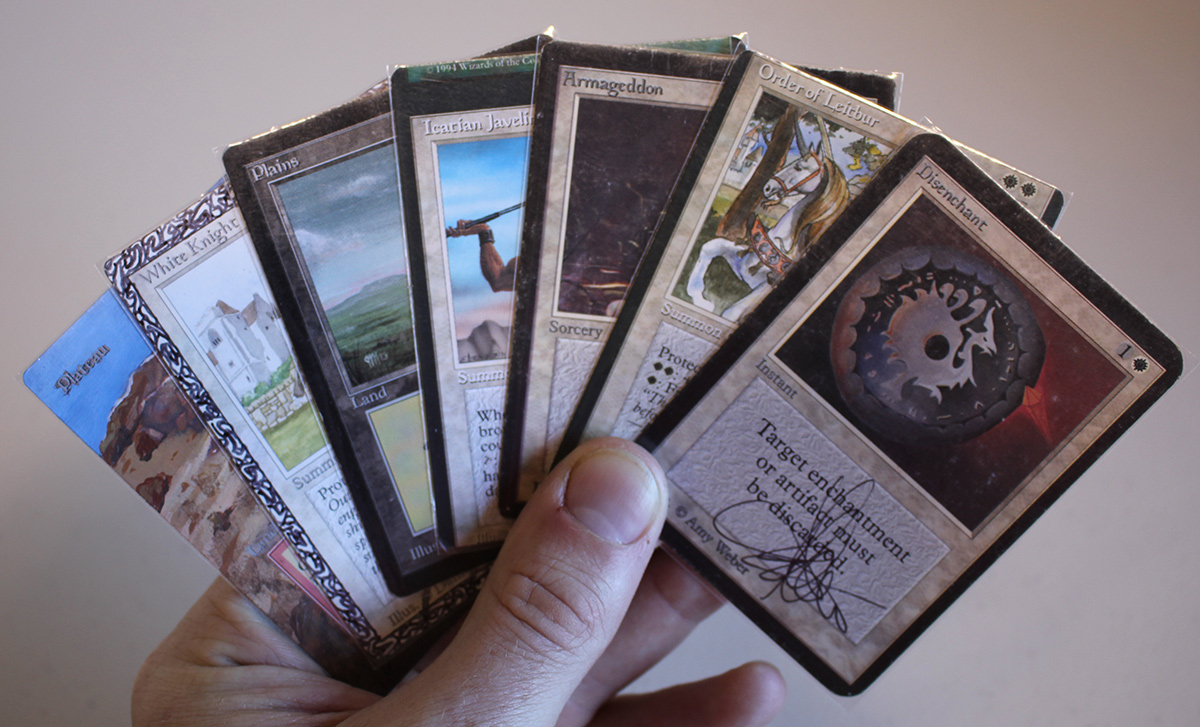
Like many of these other hands illustrate, this deck will have a straightforward path of casting a dudesweat on the first turn, second turn, and then casting some kind of removal from then on. This hand is no different, and basically every draw from the get go is welcome, as it’s already positioned to do exactly what you want to do with this deck.
Opening Hand 9
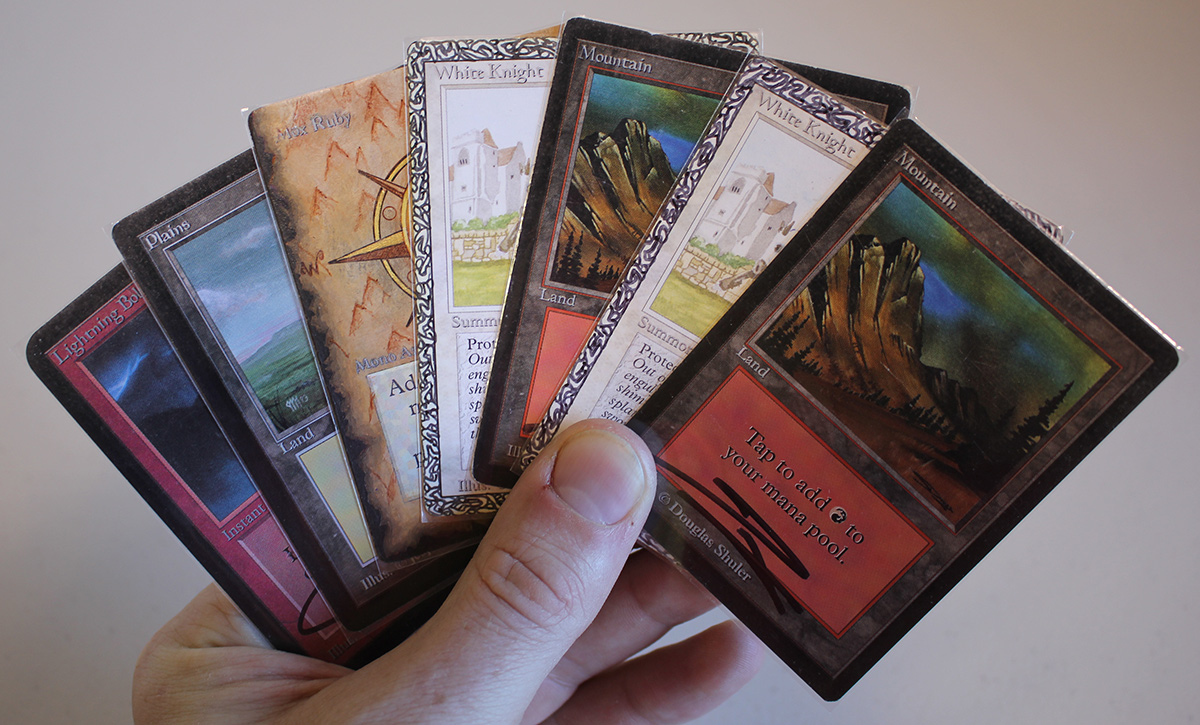
Earlier in this article we briefly mentioned a limited number of City of Brass as a possible inclusion, and this hand exemplifies why. The most common need for a mulligan with this deck is because you open a hand that relies on casting multiple spells with double white in the casting cost, but don’t yet have the mana to do so. If one of these Mountains where a City of Brass this would be a perfectly keepable hand, but given that we can’t cast anything but Lightning Bolt for the first couple of turns, I’m going to throw this back.
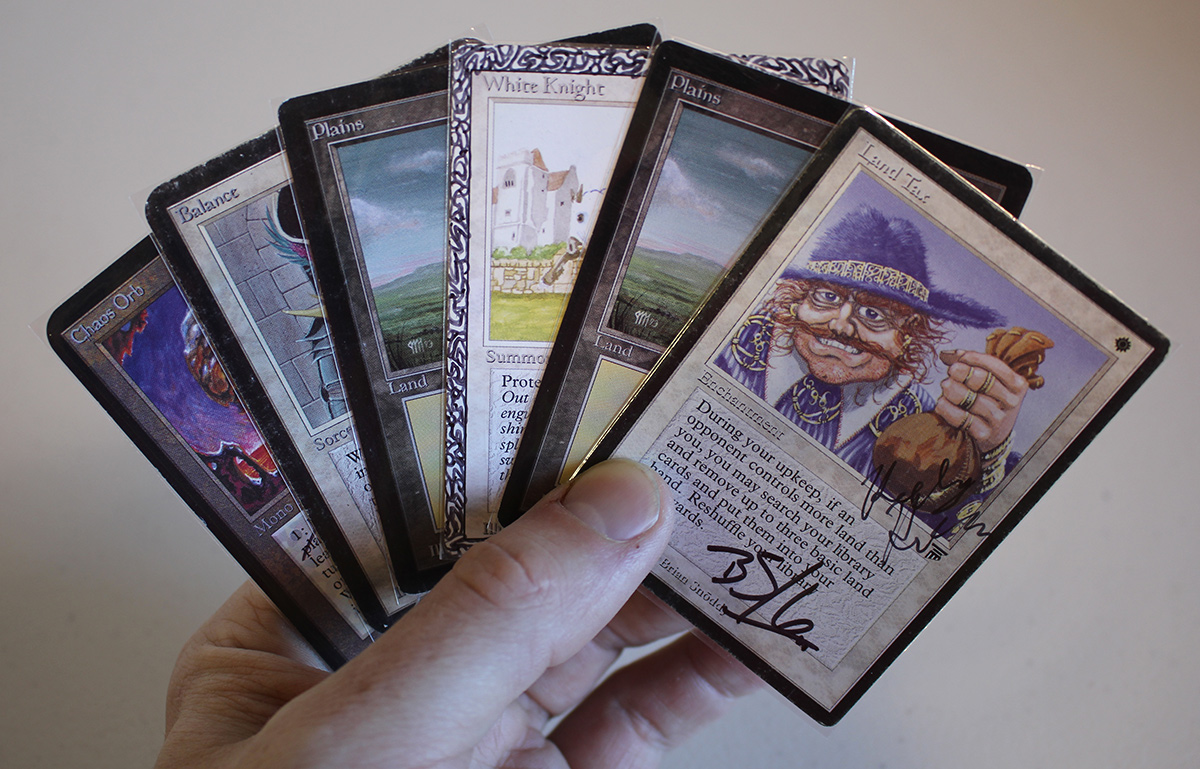
With mana, a Land Tax, a threat, and removal spells in hand, this is fine for a mulligan to six. With our pre-game scry I’d be searching for another threat most likely.
Opening Hand 10

Without a second white source yet present to cast Order of Leitbur, this hand is a keep because of the Land Tax and Savannah Lions. This hand is content to cast Lions on the first turn, follow up with Land Tax, and then gain some incremental advantages. It has no need drop lands indiscriminately, and if the opponent wants to take a turn off of developing their own game plan to Disenchant our Land Tax, while getting beat down by Savannah Lions, that’s probably fine in the long run.
Concluding Thoughts
Pink Weenie is a strong alternative to the standard White Weenie decks, and gives you access to much more removal. It is also a nice budget-friendly deck, in that you don’t really need to Power to play it, but I would say Plateaus are essential. The on-color Moxen are undoubtedly awesome in here (especially Mox Pearl), but the more basic lands you play, the more powerful Land Tax becomes. You could probably replace the Moxen with City of Brass or basic lands and be fine.
Stay tuned to Eternal Central for more sick 93-94 brews all month long. Thanks for reading.

